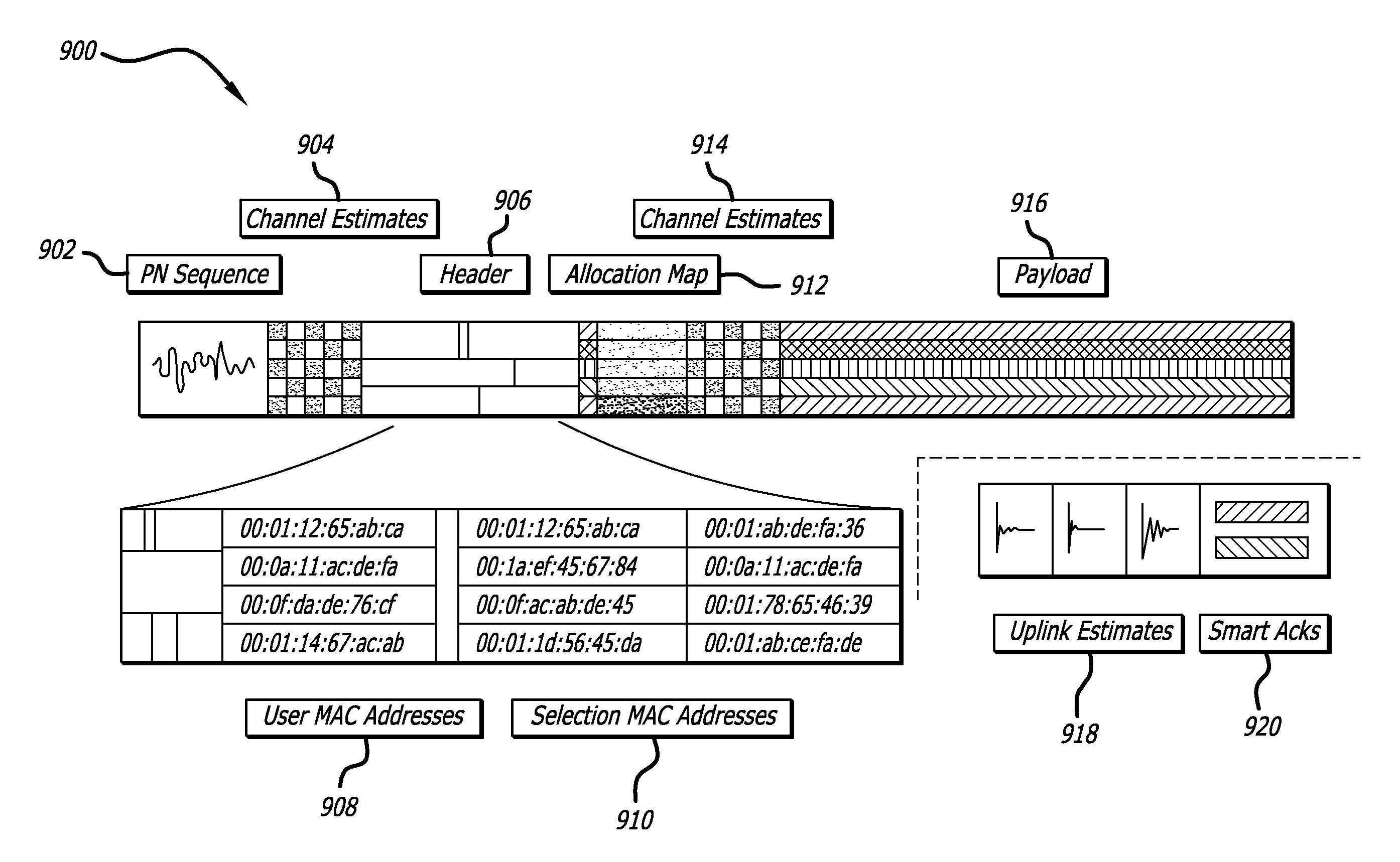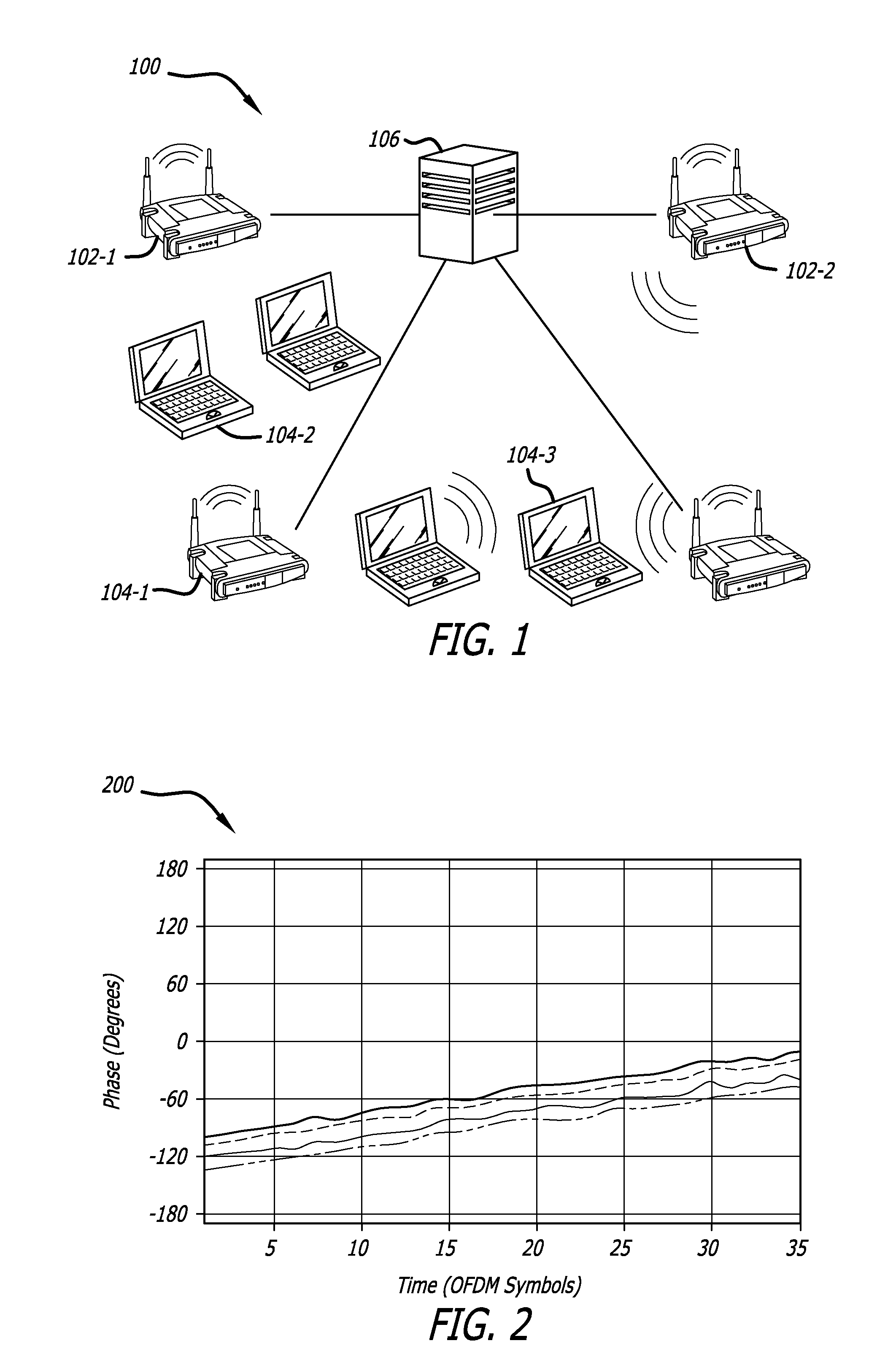Airsync: enabling distributed multiuser MIMO with full multiplexing gain
- Summary
- Abstract
- Description
- Claims
- Application Information
AI Technical Summary
Benefits of technology
Problems solved by technology
Method used
Image
Examples
embodiment
Exemplary Implemented Embodiment
[0087]An exemplary embodiment of AirSync was implemented as a digital circuit in a FPGA of a wireless open access research platform (“WARP”) radio platform. The design of the WARP radio platform is made available by Rice University. The WARP radio board utilizes a dual-band direct conversion radio transceiver from Maxim, the MAX2829. This transceiver supports both the 2.4 GHz and 5 GHz ISM bands. Although it is intended for use in 802.11a / b / g / n designs, this transceiver provides a flexible analog baseband interface. This interface allows the translation of any waveform, with a bandwidth up to 40 MHz, between baseband and RF, regardless of the waveform's adherence to an 802.11 standard. Further, when driven by a common reference clock, the phase coherency of the local oscillators in multiple MAX2829 transceivers is provided. This feature is desirable in MIMO applications as many algorithms require carefully controlled phase relationships and accurate m...
PUM
 Login to View More
Login to View More Abstract
Description
Claims
Application Information
 Login to View More
Login to View More - R&D
- Intellectual Property
- Life Sciences
- Materials
- Tech Scout
- Unparalleled Data Quality
- Higher Quality Content
- 60% Fewer Hallucinations
Browse by: Latest US Patents, China's latest patents, Technical Efficacy Thesaurus, Application Domain, Technology Topic, Popular Technical Reports.
© 2025 PatSnap. All rights reserved.Legal|Privacy policy|Modern Slavery Act Transparency Statement|Sitemap|About US| Contact US: help@patsnap.com



